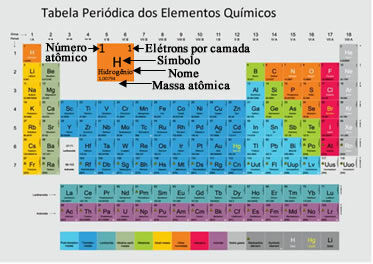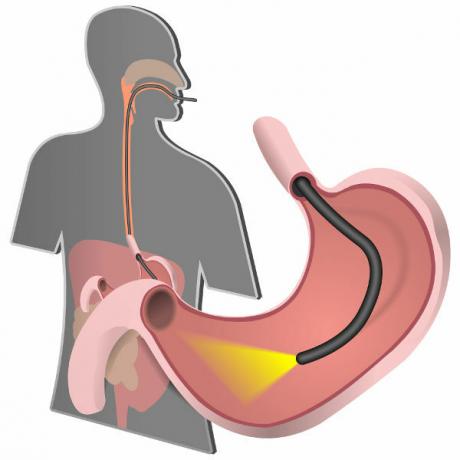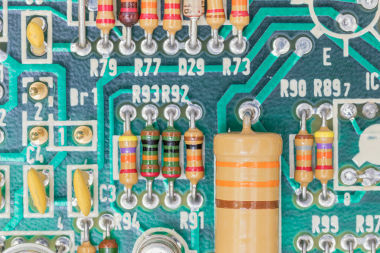Chemical elements are the basic constituents of all substances. At a microscopic level, the following definition can be made:
"A chemical element is the set of atoms that have the same atomic number."
The atomic number, symbolized by the letter “Z”, is actually the number of protons the atom has in its nucleus. Thus, each element is differentiated by the amount of protons its atoms have. For example, the set formed by atoms that have an atomic number equal to 1 form the chemical element known as hydrogen. The element oxygen, on the other hand, is formed by atoms with an atomic number equal to 8.
Thus, an isolated atom also represents a chemical element, because it forms a unitary atom set.
Currently, about 115 chemical elements are officially recognized, with properties quite different from each other and others that are similar. Therefore, the elements were organized in ascending order of atomic number, forming a set that is known as Periodic table.
In this table, as shown below, the names and symbols of each chemical element appear, as well as their atomic number at the top, and the atomic mass at the bottom:

The Periodic Table follows an increasing order of atomic numbers
Outside the periodic table, the IUPAC (International Union of Pure and Applied Chemistry) determines that chemical elements must be represented by writing the symbol in the center, the atomic number (Z) in the lower left and the mass number (A - sum of protons and neutrons in the atomic nucleus) in the upper part left: ZTHEAND.
Do not stop now... There's more after the advertising ;)
Example: bromine element symbol: 3581Br.
Such chemical elements unite, making chemical bonds and forming the most varied substances. So, on a macroscopic level, the elements were discovered through the decomposition of chemical substances. They were decomposed more and more until it was no longer possible to decompose them. In this way, it was known that the chemical elements that made it up had been arrived at.
For example, when an electric current is passed over water (electrolysis), it breaks down into two simple substances, hydrogen and oxygen. These, in turn, cannot be decomposed, as they are formed by only one type of chemical element each.
So it turned out that water was not a chemical element, but hydrogen and oxygen were.
Although the chemical elements make up everything around us, only a few are really essential for the maintenance of our life, see which are:

Table with essential elements for the maintenance of life and their quantities in a 60 kg person
To learn more about each of them, visit the Chemistry subsection called Chemical Elements.
By Jennifer Fogaça
Graduated in Chemistry
Would you like to reference this text in a school or academic work? Look:
FOGAÇA, Jennifer Rocha Vargas. "What is a Chemical Element?"; Brazil School. Available in: https://brasilescola.uol.com.br/o-que-e/quimica/o-que-e-elemento-quimico.htm. Accessed on June 27, 2021.
What is Chemistry?

Access this link and get to know what an oxide is, the way used to identify this important group of inorganic substances, as well as the naming rules used to name them and the main classifications (double, acidic, basic, amphoteric and neutral) they can receive.



